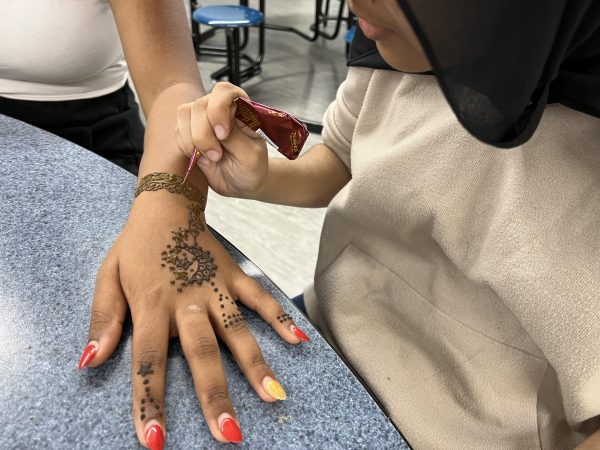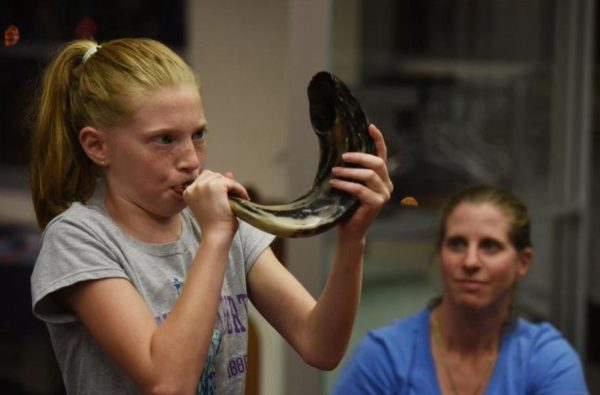As of the 2024-2025 school year, District 128 has implemented a drastic change to the school calendar, making it strictly operational. What this means for students is that days given off for religious holidays will be solely based on the percentage of students and staff that will be out of the building. If that number is above a certain threshold, school is closed for operational reasons.
District 128 Director of Equity and Inclusion Larry Varn defined operational as “[school being] unable to function due to the amount of staff or students missing school on a particular day.”
Although there was good intent behind the change, this new system has caused significant problems for the religious minority groups at VHHS.
Recently, students in the Jewish community at VHHS have expressed negative opinions on the new calendar’s impact on a very important religious holiday, Rosh Hashanah.
“We’ve had this day off ever since we were freshmen. Now, on a day when we’re supposed to be going to service and spending time with our families, we need to make a decision to either skip school and be behind or go to school and miss out on Rosh Hashanah,” Jori Ellen (12) said.
Students described that the new calendar makes them feel conflicted about either coming to school or being at home to celebrate their religious holiday. This should not be the case, and it isn’t fair that these students and their families have been thrown into this position.
“I don’t like feeling as if I need to be missing out on school in order to participate in my religion’s holiday,” Andrew Schulman (12) said. “These days are important to us. Taking them away is like taking away Christmas or Good Friday.”
Perspectives from the Muslim population at our school gave voice to the issue as well, rightfully arguing their stance for inclusivity.
“When there is a holiday that we do not have school off , no big tests or big events can go on during the school day,” Laila Rahmy (12) said, “so just taking that holiday off as a whole would make the person celebrating feel included.

Having that inclusivity matters, especially for those minorities we have [at school].”
Varn shared what transpired to lead to the implementation of the operational calendar and how the district responded.
“We began by looking at what impact it would have on the school calendar to add in another non-attendance day, and there were several constraints we had to take into consideration.” Varn said.
Varn spoke on how limitations surrounding the required number of days per semester, as well as others, make it diffi cult to add additional non-attendance days into the calendar. For example, Varn mentioned the legal issue behind identifying students based on their religion, which makes the situation even more difficult to solve.
“We are a public school, and because of that, there is the establishment clause that puts a separation between church and state. So, we can’t [take days off ] because of religion. In order for us to observe a non-attendance day, it must be for an operational reason,” Varn said.
Additionally, Varn mentioned that there is a threshold that VHHS needs to meet in order to be unable to operate.
“We decided that the number [for staff ] was 12 percent. When it came to students, the state of Illinois said 50 percent. You needed to have at least 50 percent of students present in order to count the day as an attendance day,” Varn said.
With all that being said, there are two major issues I noticed that arose from this policy.
The first has to do with the threshold. If we were to assume that 50% of VHHS students would need to be absent for Rosh Hashanah to be observed as a non-attendance day, when we don’t even have a 50% Jewish population at our school, it makes me skeptical that the students are really being given a fair chance.
Essentially, even if every single student from the Jewish, Muslim, and Hindu populations at our school decided to stay home on their religious holidays, it would be impossible for the school day to be canceled since those groups don’t make up 50% of our school population.
This is unreasonable as it inherently flies in the face of our stated goals as a district.
The second major problem has to do with what the calendar was designed to revolve around: operationality.
I was in the building during Rosh Hashanah on Oct. 3. Plenty of my teachers made that day a review day. I sat in the near-empty classrooms with the substitute teachers. I watched as the kids in my class sat on their phones, talked with their friends, and did homework from other classes, as if it was a study hall.
Based on my experience, the absence of so many students and teachers at school made it difficult for valuable learning to happen, even if the absences did not meet the 50% or 12% threshold. Yes, school was in session. Yes, many of us were there. However, if functioning operationally is defined by how effectively new material is taught and learned, then we struggled to meet the standard.
In a study done on classroom absenteeism and individual success by the University of Pennsylvania, the findings suggested that a high rate of student absences could impact the learning of students present as well.
According to Xinyin Chen and Howard Stevenson, the lead researchers behind the experiment, “When absent students return back to the classroom, teachers must often reallocate regular instructional time to remediate these students, but in doing so, academic progress slows for the entire class.”
What we can correlate from this study is that if a high number of students are absent on a particular day, the effect of their absence can hinder learning for the students who are there. This is especially relevant to the day when many Jewish students and staff stayed home for Rosh Hashanah.

Taking into account the problems with our current threshold, as well as the issues with how operational the class setting is with a noticeable number of absent students, we must find solutions.
I understand that it is very difficult to find a middle ground in this situation. I am in no way putting down the work done by Varn and the calendar committee, but I believe there are other ways we can go about it. For example, we can lower the student threshold.
I will stand by my belief that 50% is much too high of a number. The minority groups at our school don’t even make up this percentage demographically. If the current threshold persists, it still causes issues with operationality, the very thing that the new calendar is intended to protect. These shown not just within VHHS but greater school areas as well.
The operational calendar was a starting point, but now certain revisions should be made. We need to better acknowledge the religious minorities at VHHS and work toward solutions that don’t take away from these groups. Instead, we should work to find a middle ground that doesn’t negatively learning while still acknowledging the vast majority of religious groups we have at VHHS and their holidays.

